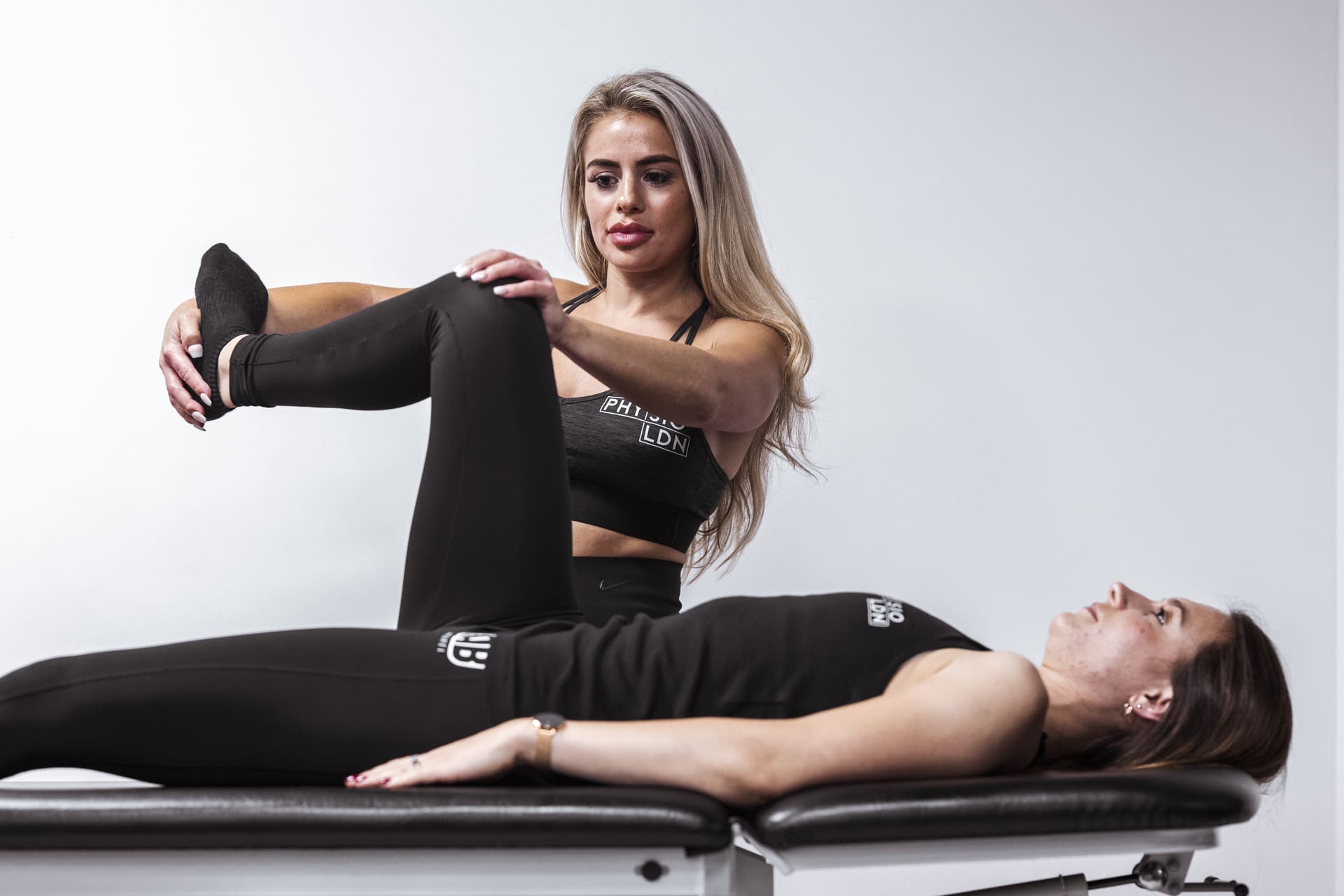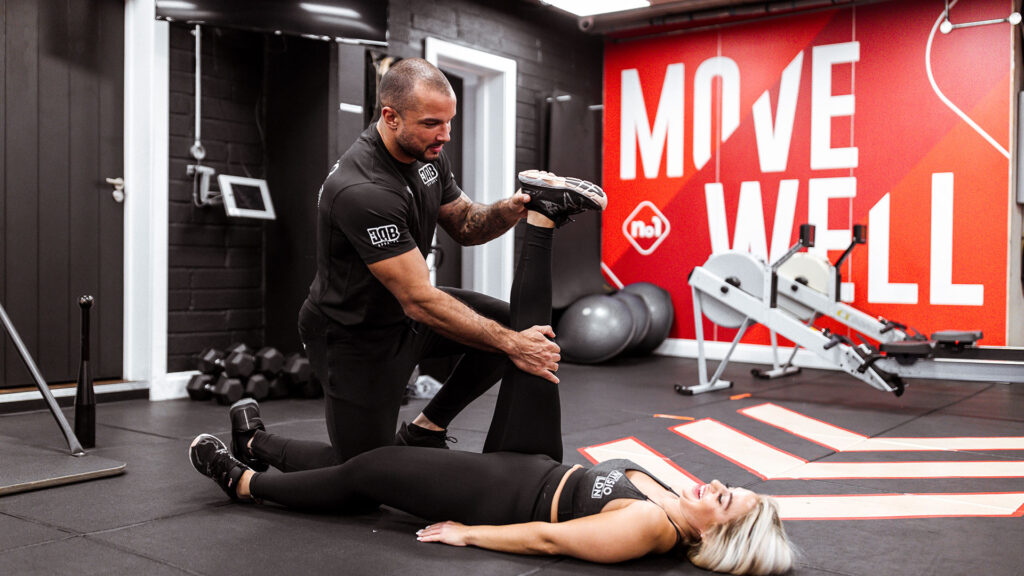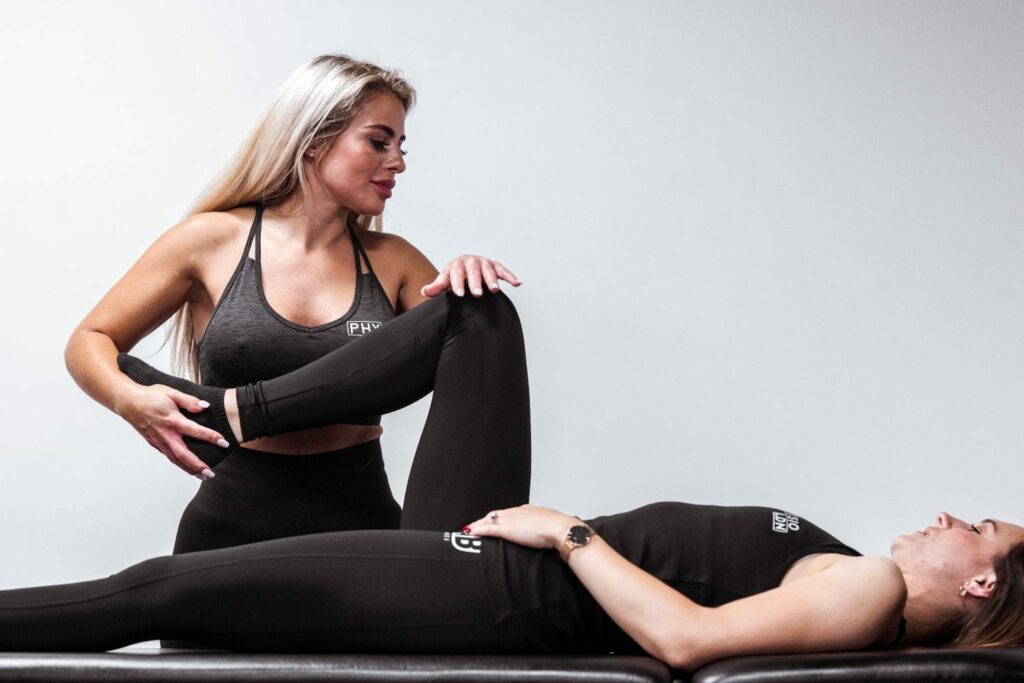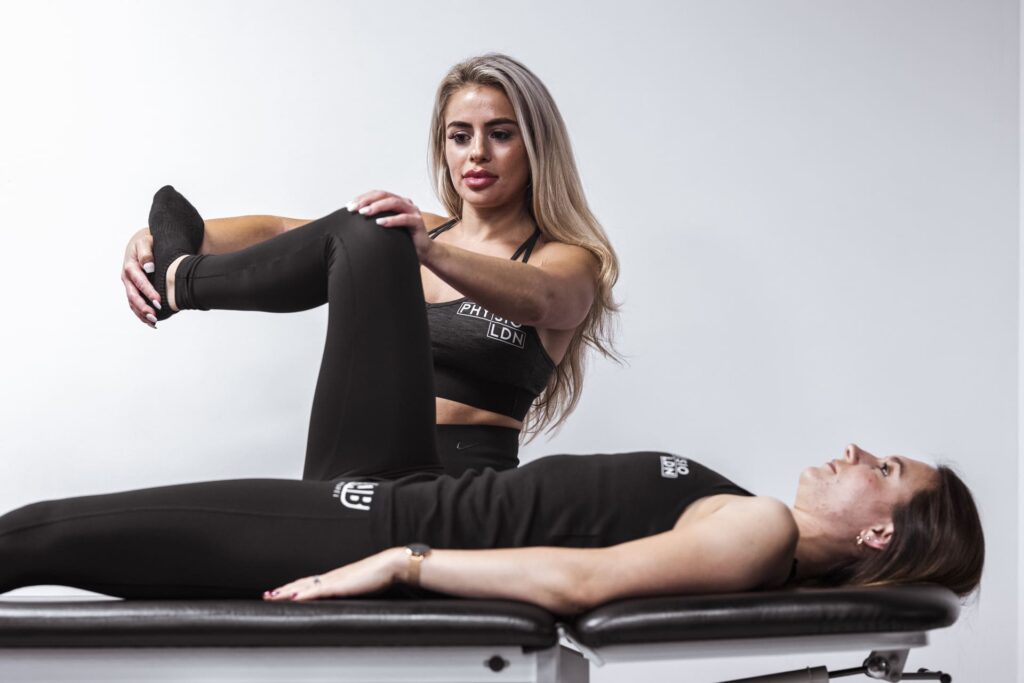Table of Contents
Main Takeaways
- Knee pain affects millions; osteoarthritis impacts 10% of men and 13% of women over 60.
- Non-surgical treatments—physiotherapy, exercise, and weight control—are highly effective.
- Injections like corticosteroids and hyaluronic acid offer additional relief.
- Advanced options include Apos therapy, gene therapy, and stem cell treatments.
- Surgery (arthroscopy or total knee replacement) is considered for severe, unresponsive pain.
Knee pain is a common complaint affecting millions worldwide, especially as people age. In fact, knee osteoarthritis (OA) affects 10% of men and 13% of women aged 60 or older, making it one of the leading causes of chronic pain and disability. Whether caused by injury, arthritis, or overuse, knee pain can significantly impact mobility and quality of life.If you’re seeking knee pain treatment in London, evidence-based care can help you return to activity faster.
Fortunately, there are numerous treatment options available ranging from non-surgical therapies to advanced surgical interventions. This article explores the most effective approaches to knee pain treatment, focusing on evidence-based methods that can help patients regain movement, reduce pain, and improve function.
Non-Surgical Treatments
Non-surgical treatments are often the first line of defense against knee pain, especially for conditions like osteoarthritis or minor injuries. These approaches aim to reduce inflammation, improve joint mobility, and strengthen the muscles supporting the knee.

One of the most critical components of managing knee osteoarthritis and other chronic knee conditions is movement. According to the Arthritis Foundation, incorporating regular exercise tailored to the individual’s ability is essential for reducing pain and improving joint function. Physiotherapy plays a vital role here by providing targeted exercises that enhance strength and flexibility while minimizing strain on the knee joint.Working with a professional knee pain physiotherapist ensures your plan is individualized and progressed safely.
Specialized physiotherapy clinics in London, such as One Body LDN, offer expert musculoskeletal physiotherapy that combines deep tissue massage with rehabilitative exercises. Their therapists, many of whom are former athletes and highly trained professionals, focus on identifying and treating the root causes of knee pain rather than just addressing symptoms. This holistic approach helps patients move better and feel more comfortable without resorting to invasive procedures.
Additionally, innovative non-invasive devices like Apos®, a foot-worn device, have shown promising results in reducing chronic knee pain by altering gait mechanics and unloading the affected joint. A recent study reported up to a 57% reduction in pain among users, along with significant cost savings for healthcare providers.
In addition to physiotherapy and innovative devices, other non-surgical treatments include the use of corticosteroid injections and hyaluronic acid supplements. Corticosteroids can provide quick relief from inflammation and pain, making them a popular option for those experiencing acute flare-ups. Meanwhile, hyaluronic acid, a naturally occurring substance in the joint, can help lubricate the knee and improve mobility, offering a more long-term solution for managing symptoms of osteoarthritis.
Moreover, lifestyle modifications play a crucial role in the non-surgical management of knee pain. Weight management is particularly important, as excess weight places additional stress on the knee joints. Simple changes, such as adopting a balanced diet rich in anti-inflammatory foods and engaging in low-impact activities like swimming or cycling, can significantly alleviate discomfort and enhance overall joint health. The integration of these strategies not only aids in pain relief but also fosters a more active and fulfilling lifestyle.
Medications and Injections
When non-surgical therapies alone are insufficient, medications and injections can provide additional relief from knee pain. Nonsteroidal anti-inflammatory drugs (NSAIDs) are commonly prescribed to reduce inflammation and alleviate discomfort. However, caution is necessary as nearly half of people with osteoarthritis have at least one comorbidity, often cardiovascular disease, which can complicate NSAID use.
Studies indicate NSAID usage in this group ranges between 33% and 46.2%, highlighting the need for careful medical supervision. Physicians often recommend lifestyle modifications alongside medication, such as weight management and physical therapy, to enhance the effectiveness of NSAIDs and reduce overall strain on the joints.

Injections such as corticosteroids or hyaluronic acid can also be effective for managing knee pain. Corticosteroid injections help reduce inflammation quickly, while hyaluronic acid injections aim to lubricate the joint and improve mobility. Patients typically experience improvements in stiffness and physical function, though some side effects like headache or abdominal pain have been reported in clinical studies.
The timing and frequency of these injections can vary, with some patients benefiting from repeated treatments, while others may find that their symptoms improve significantly after just one or two sessions. Additionally, the choice between corticosteroids and hyaluronic acid often depends on individual patient factors, including the severity of the condition and previous treatment responses.
Emerging treatments like gene therapy are gaining attention as potentially transformative options. According to experts at the Mayo Clinic News Network, recent progress in gene therapy offers hope for long-term relief by targeting the underlying disease mechanisms of osteoarthritis rather than just symptoms. This innovative approach could potentially modify the disease process itself, leading to more sustainable outcomes.
Moreover, researchers are exploring the use of stem cell therapy, which aims to regenerate damaged cartilage and restore joint function. Preliminary studies suggest that stem cell injections could not only alleviate pain but also promote healing within the joint, offering a dual benefit that could change the landscape of knee osteoarthritis treatment.
Surgical Options for Relief
For patients with severe knee damage or persistent pain unresponsive to conservative treatments, surgical options may be necessary. Procedures range from minimally invasive arthroscopy to partial or total knee replacement surgeries.
Knee arthroscopy involves small incisions and the use of a camera to repair or remove damaged tissue. It is typically reserved for specific cases such as meniscal tears or loose bodies within the joint. However, its effectiveness for osteoarthritis is limited and often debated. Surgeons may also utilize arthroscopy to address issues such as synovitis or to smooth out rough cartilage surfaces, which can help alleviate some symptoms, though it is not a definitive cure for degenerative conditions.
Total knee replacement surgery is considered the gold standard for end-stage osteoarthritis. This procedure replaces the damaged joint surfaces with artificial implants, providing significant pain relief and improved function. Recovery involves extensive physiotherapy to regain strength and mobility.
Patients often report a dramatic improvement in their quality of life post-surgery, allowing them to return to activities they had previously avoided due to pain. However, it’s important to note that the longevity of knee implants can vary, and some patients may require revision surgery after a decade or more, depending on their activity level and overall health.For more detail information see the blog knee surgery for knee pain.
Given the growing prevalence of knee pain and osteoarthritis, the knee pain management market is projected to grow at a CAGR of 4.49% by 2030, reflecting increasing demand for both surgical and non-surgical interventions. This growth is also influenced by advancements in surgical techniques and technologies, such as robotic-assisted surgeries, which enhance precision and potentially improve outcomes.
Furthermore, the integration of personalized medicine approaches is paving the way for tailored treatment plans that consider individual patient factors, leading to more effective management of knee conditions.
FAQ
What causes knee pain?
Knee pain can result from various causes including osteoarthritis, ligament injuries, meniscal tears, tendonitis, bursitis, or overuse. Age, obesity, and previous injuries increase the risk of developing chronic knee conditions. Additionally, certain activities or sports that involve repetitive knee motion, such as running or cycling, can exacerbate existing issues or lead to new injuries. Understanding the specific cause of knee pain is crucial for effective treatment and management, as it allows for targeted interventions that can alleviate discomfort and improve mobility.

How effective is physiotherapy for knee pain?
Physiotherapy is highly effective for many types of knee pain. It focuses on strengthening muscles, improving joint mobility, and correcting movement patterns, which can reduce pain and prevent further injury. Many patients experience noticeable improvement within a few sessions. Furthermore, physiotherapists often incorporate modalities such as ultrasound, electrical stimulation, and manual therapy to enhance recovery. Personalized exercise programs not only address the immediate pain but also work towards building resilience in the knee joint, ensuring long-term health and functionality.
Are knee injections safe?
Knee injections like corticosteroids and hyaluronic acid are generally safe when administered by trained professionals. Side effects are usually mild but can include temporary pain, swelling, or rare allergic reactions. It is important to discuss risks with your healthcare provider. In addition, the frequency and type of injection can vary based on individual needs and conditions. For some patients, a series of injections may provide significant relief, while others might benefit from alternative treatments. Understanding the potential benefits and drawbacks of knee injections can help patients make informed decisions about their pain management strategies.
When should I consider surgery for knee pain?
Surgery is typically considered when conservative treatments fail to relieve severe pain or disability, particularly in cases of advanced osteoarthritis or structural damage. A thorough evaluation by an orthopedic surgeon and physiotherapist will help determine the best course of action. Surgical options can range from arthroscopic procedures to total knee replacements, depending on the severity of the condition. It’s essential for patients to weigh the potential benefits of surgery against the risks and recovery time, as well as to explore all non-surgical avenues before making a decision.
Can exercise worsen knee osteoarthritis?
When done correctly, exercise does not worsen knee osteoarthritis and is actually beneficial. Low-impact activities such as swimming, cycling, and guided physiotherapy exercises help maintain joint health and reduce stiffness. In fact, a well-structured exercise program can improve muscle strength around the knee, enhance flexibility, and promote better overall joint function. Engaging in regular physical activity is also linked to improved mood and quality of life, making it an essential component of managing osteoarthritis effectively.
Is knee pain inevitable with aging?
While knee pain becomes more common with age due to wear and tear, it is not inevitable. Maintaining a healthy weight, staying active, and addressing injuries promptly can help preserve knee function and reduce pain risks. Moreover, incorporating strength training and flexibility exercises into your routine can bolster the muscles supporting the knee joint, potentially delaying the onset of pain. Regular check-ups with healthcare providers can also help catch early signs of knee issues, allowing for proactive management and intervention before pain becomes a significant problem.
Take Control of Your Knee Pain with One Body LDN
If you’re struggling with knee pain and looking for expert care, One Body LDN is here to help. Voted as the best London physio clinic by thousands, our award-winning team of physiotherapists is ready to address the root cause of your pain. With a combination of deep tissue massage and exercise rehabilitation, we specialize in musculoskeletal physiotherapy, post-operative care, and sports injuries. Our clinicians, including former athletes and NHS specialists, are dedicated to providing you with a precise diagnosis and effective treatment plans for instant pain relief. Don’t let your symptoms dictate your life. Book your free initial assessment at our clinic today and take the first step towards feeling amazing again.


